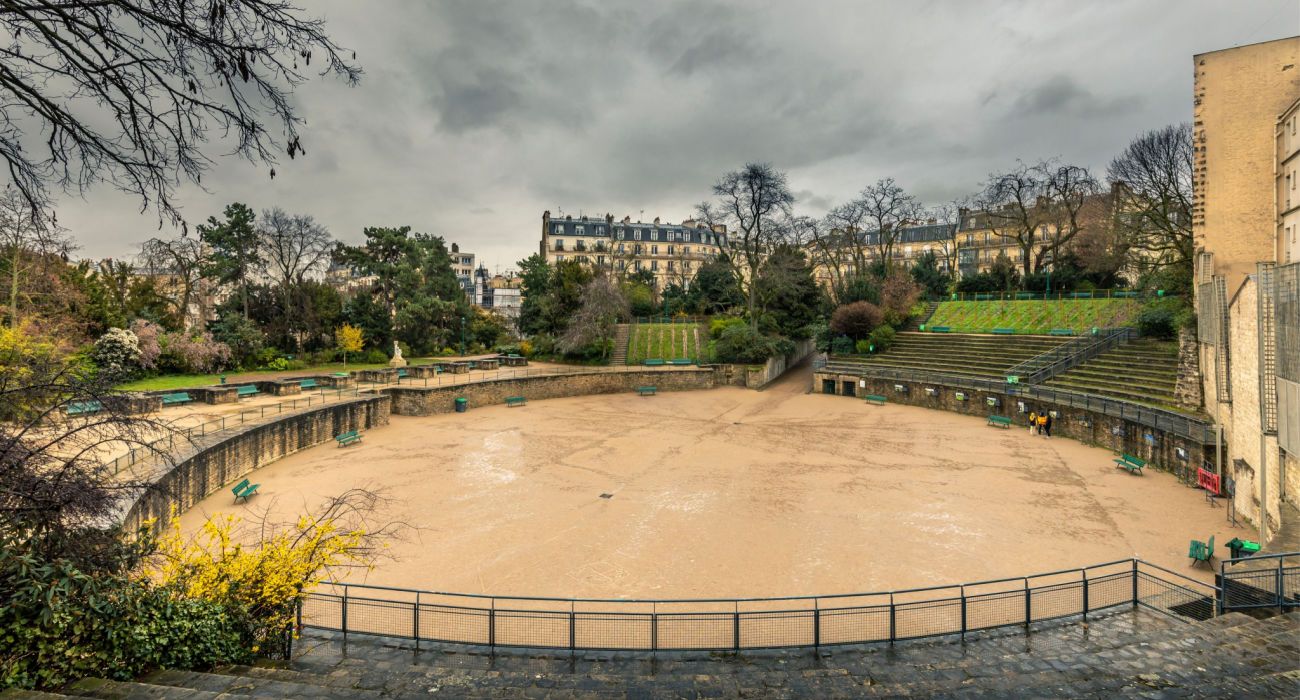Quick Links
Paris, like London, was once a Roman town (today, visitors can still see the vestiges of Roman Londinium and its walls). In Roman times, the Gallo-Roman town of Paris was known as Lutetia. Today visitors can include seeing the Roman ruins of Paris as part of their week-long itinerary for discovering Paris.
No one goes to Paris to see the Roman ruins, but the few vestiges that remain are a great way to get a glimpse into the history of the small city when it was a forgotten Roman town in northern Gaul. One of the most eye-catching attractions in Paris is the catacombs with millions of skeletons.
The Roman City Of Lutetia Parisiorum
Lutetia was likely founded in the middle of the 3rd century BC by the Gallic tribe called the Parisii. "Lutetia" was likely from a Celtic word meaning "swamp" (it was built on swampy ground). It was first mentioned by Julius Caesar when he conquered it, and he referred to it as Lutetia Parisiorum (or Lutetia of the Parisii Tribe). Eventually, it became known as Parision and then Paris by 1265. But during the 500 or so year-long Roman period, it was known as "Lutetia."
- Caesar: Conquered Paris In 52 BC
- Size: Around 54 Hectares
- Population: Around 8,000
After the Romans took the old Celtic town, they gradually rebuilt it into a Roman city. Today there are still the ruins of the old Roman town in Paris for those who know where to look. The ruins include a forum, an amphitheater, and Roman baths. But don't expect any impressive ruins, the most impressive Roman ruins in France are in the southern city of Nimes today. Another place to visit is Lyon - it was the old capital of Roman Gaul.
As time wore on and the Empire weakened, so too did the security (especially of far-flung places like Paris close to the frontier). The city center was moved to Île de a Cité, which was then protected by massive walls.
The Roman Forum Of Paris
Like other Roman cities, the heart of Roman Paris was the Forum - the city's main square. It is delimited by the current Paris streets of Boulevard Saint Michel to the west, the rue Saint Jacques to the east, rue Cujas to the north, and Rue G. Lussac and rue Malbranch to the south. A wall surrounded the forum.
- Size Of Forum: 178 meters by 89 meters, 584 feet by 291 feet
Only a small part of the wall of the old forum is still visible above ground today. Still, the foundations have been extensively excavated.
Anyone visiting Rome should definitely explore the ancient Forum of Rome - it was the beating heart of the empire.
Roman Baths - The Thermes de Cluny
The Thermes de Cluny were the city's grand public baths and are now protected in the museum - the Musee de Cluny. They represent the largest and best-preserved part of Roman Lutetia. Like other Roman baths, they were heated by a hypocaust and had a caldarium (hot steamy room), a tepidarium (a tepid room), and a frigidarium (with a cold-water pool).
Musee De Cluny:
- Operating Hours: 9.30 am to 6.15 pm
- Days Open: Every Day Except Mondays
- Entry Fee: 12 Euros ($13 USD)
Paris had a 16 km (10-mile) long aqueduct that transported water to feed the city's baths and fountain. The piers and ruins of the arches are still visible in places.
The Amphitheater & Theater of Lutetia
The Amphitheater of Lutetia
The Amphitheater (called Les Arenes de Lutece in French) is located near the intersection of Rue Monge and Rue de Navarre. It was here that the Romans would have watched gladiator and animal fights and held large-scale festivities.
- Capacity: Around 17,000 Spectators
No one knows when it was built, but it may have been built around the end of the 1st century AD. During the early 4th century, it was largely dismantled as its stones were used in the building of the fortress of the Île de a Cité and other defensive works. It was rediscovered in 1867-68 and has been partially rebuilt since 1915.
The Theater of Lutetia
The old Roman theater of Lutetia is located where Lycee Saint-Louis is today. It was likely built in the second half of the 1st century AD. It was also partially dissembled to build later defensive works. It was excavated and partially recreated between 1861 and 1884.

